-
 Bitcoin
Bitcoin $106,754.6083
1.33% -
 Ethereum
Ethereum $2,625.8249
3.80% -
 Tether USDt
Tether USDt $1.0001
-0.03% -
 XRP
XRP $2.1891
1.67% -
 BNB
BNB $654.5220
0.66% -
 Solana
Solana $156.9428
7.28% -
 USDC
USDC $0.9998
0.00% -
 Dogecoin
Dogecoin $0.1780
1.14% -
 TRON
TRON $0.2706
-0.16% -
 Cardano
Cardano $0.6470
2.77% -
 Hyperliquid
Hyperliquid $44.6467
10.24% -
 Sui
Sui $3.1128
3.86% -
 Bitcoin Cash
Bitcoin Cash $455.7646
3.00% -
 Chainlink
Chainlink $13.6858
4.08% -
 UNUS SED LEO
UNUS SED LEO $9.2682
0.21% -
 Avalanche
Avalanche $19.7433
3.79% -
 Stellar
Stellar $0.2616
1.64% -
 Toncoin
Toncoin $3.0222
2.19% -
 Shiba Inu
Shiba Inu $0.0...01220
1.49% -
 Hedera
Hedera $0.1580
2.75% -
 Litecoin
Litecoin $87.4964
2.29% -
 Polkadot
Polkadot $3.8958
3.05% -
 Ethena USDe
Ethena USDe $1.0000
-0.04% -
 Monero
Monero $317.2263
0.26% -
 Bitget Token
Bitget Token $4.5985
1.68% -
 Dai
Dai $0.9999
0.00% -
 Pepe
Pepe $0.0...01140
2.44% -
 Uniswap
Uniswap $7.6065
5.29% -
 Pi
Pi $0.6042
-2.00% -
 Aave
Aave $289.6343
6.02%
How to view the liquidity of trading pairs on Coinbase?
Coinbase doesn't offer a single liquidity metric; instead, assess liquidity by analyzing order book depth, 24-hour trading volume, and the bid-ask spread on Coinbase Pro, supplemented by data from reliable third-party tools.
Mar 15, 2025 at 06:00 pm

Key Points:
- Coinbase doesn't directly display a single, readily accessible liquidity metric for trading pairs like some decentralized exchanges (DEXs).
- Assessing liquidity on Coinbase requires analyzing order book depth, trading volume, and spread.
- Understanding these factors helps determine the ease of buying or selling a cryptocurrency pair without significantly impacting its price.
- Indirect methods like using third-party tools can offer a broader perspective on Coinbase's liquidity.
How to View the Liquidity of Trading Pairs on Coinbase?
Coinbase, unlike many decentralized exchanges, doesn't provide a simple, singular "liquidity score" for its trading pairs. Instead, understanding liquidity requires a multi-faceted approach focusing on observable market data. This involves examining several key indicators within the Coinbase Pro interface, which provides a more detailed view than the standard Coinbase exchange.
Analyzing the Order Book:
The order book is the cornerstone of understanding liquidity. It shows the buy and sell orders currently placed by users at various price points. A deep order book, characterized by many orders at various prices near the current market price, indicates high liquidity. A shallow order book, with few orders, suggests low liquidity. To access the order book, navigate to the trading pair you're interested in on Coinbase Pro.
- Deep Order Book: A large number of buy and sell orders clustered around the current market price signifies high liquidity. Large trades are less likely to significantly move the price.
- Shallow Order Book: A small number of orders, particularly near the current price, points to low liquidity. Even small trades could cause significant price swings.
Evaluating Trading Volume:
Trading volume represents the total number of coins traded within a specific timeframe (e.g., 24 hours). Higher trading volume generally suggests greater liquidity. A high volume indicates that many traders are actively buying and selling the pair, implying easier execution of trades without major price disruptions. Coinbase displays this data prominently on its platform for each trading pair.
- High Trading Volume: Implies significant trading activity and generally better liquidity.
- Low Trading Volume: Suggests less trading activity and potentially lower liquidity.
Understanding the Bid-Ask Spread:
The bid-ask spread is the difference between the highest price a buyer is willing to pay (bid) and the lowest price a seller is willing to accept (ask). A narrow spread indicates high liquidity, as buyers and sellers are closely aligned on price. A wide spread suggests low liquidity, as the difference between buying and selling prices is substantial. This is readily visible on the Coinbase Pro order book.
- Narrow Spread: Indicates high liquidity; buying and selling is efficient.
- Wide Spread: Suggests low liquidity; significant price slippage is possible.
Utilizing Third-Party Tools:
While Coinbase doesn't directly provide a liquidity score, various third-party websites and analytical platforms aggregate market data from different exchanges, including Coinbase. These tools might offer composite liquidity indicators or allow for more comprehensive comparison across different exchanges. Use caution and verify the reliability of any third-party data source. These tools can provide a broader context but shouldn't be the sole basis for assessing liquidity on Coinbase.
Indirect Indicators of Liquidity on Coinbase:
Beyond the core metrics, certain indirect factors can offer clues about liquidity. For instance, a cryptocurrency pair listed prominently on Coinbase's main interface typically enjoys higher liquidity compared to those listed only on Coinbase Pro. The overall market capitalization and trading activity of a specific cryptocurrency also contribute to its liquidity across various exchanges, including Coinbase. The more popular and actively traded a cryptocurrency is, the more liquid its trading pairs are likely to be on Coinbase.
Common Questions:
Q: Does Coinbase provide a liquidity score for its trading pairs?
A: No, Coinbase does not directly offer a single, quantifiable liquidity score. Liquidity assessment relies on interpreting order book depth, trading volume, and the bid-ask spread.
Q: How can I compare the liquidity of different trading pairs on Coinbase?
A: Compare the order book depth, 24-hour trading volume, and the bid-ask spread for each pair on Coinbase Pro. A deeper order book, higher volume, and narrower spread indicate better liquidity.
Q: Are third-party tools accurate in assessing Coinbase liquidity?
A: Third-party tools can provide additional context, but their accuracy depends on their data sources and methodology. It's essential to use multiple sources and critically evaluate the information.
Q: What is the significance of a wide bid-ask spread on Coinbase?
A: A wide bid-ask spread indicates low liquidity. This means that buying or selling a significant amount of the asset could lead to a noticeable price change (slippage) due to the limited number of buy/sell orders available at favorable prices.
Q: How does trading volume relate to liquidity on Coinbase?
A: High trading volume usually signifies greater liquidity. A large volume suggests many traders are actively buying and selling, implying trades can be executed easily without excessive price fluctuations. Low volume implies the opposite.
Disclaimer:info@kdj.com
The information provided is not trading advice. kdj.com does not assume any responsibility for any investments made based on the information provided in this article. Cryptocurrencies are highly volatile and it is highly recommended that you invest with caution after thorough research!
If you believe that the content used on this website infringes your copyright, please contact us immediately (info@kdj.com) and we will delete it promptly.
- Ethereum Price Expectations: Stuck in Neutral or Ready to Rumble?
- 2025-06-20 02:45:13
- Bitcoin's Rally Stalls? AI Tokens Like RUVI & OZAK Steal the Show
- 2025-06-20 02:45:13
- Story Crypto Price Down Today: What's Going On?
- 2025-06-20 02:50:12
- Little Pepe, Meme Coins, and Shiba Inu: What's the Buzz in the Crypto Jungle?
- 2025-06-20 03:10:12
- Troller Cat: The Meme Coin Rickrolling Its Way to ROI Riches
- 2025-06-20 03:25:12
- DePIN, Shared Infrastructure, New Era: Building the Future, Together
- 2025-06-20 02:25:12
Related knowledge
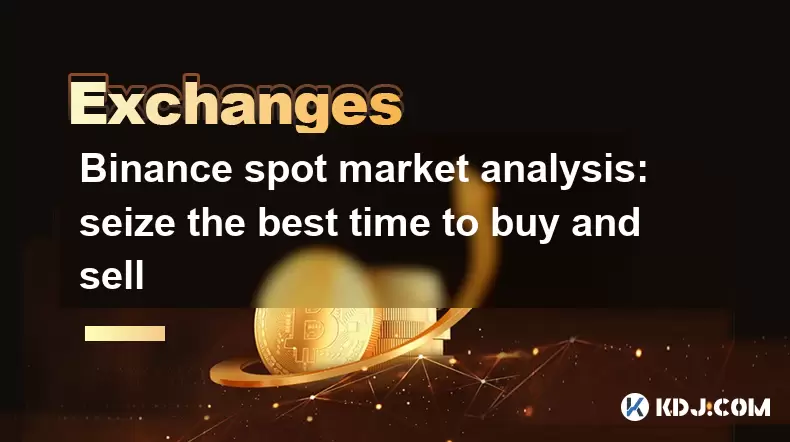
Binance spot market analysis: seize the best time to buy and sell
Jun 19,2025 at 04:56pm
Understanding the Binance Spot MarketThe Binance spot market is one of the most popular platforms for cryptocurrency trading globally. It allows users to trade digital assets at current market prices, making it essential for traders aiming to buy low and sell high. Unlike futures or margin trading, spot trading involves direct ownership of the asset aft...
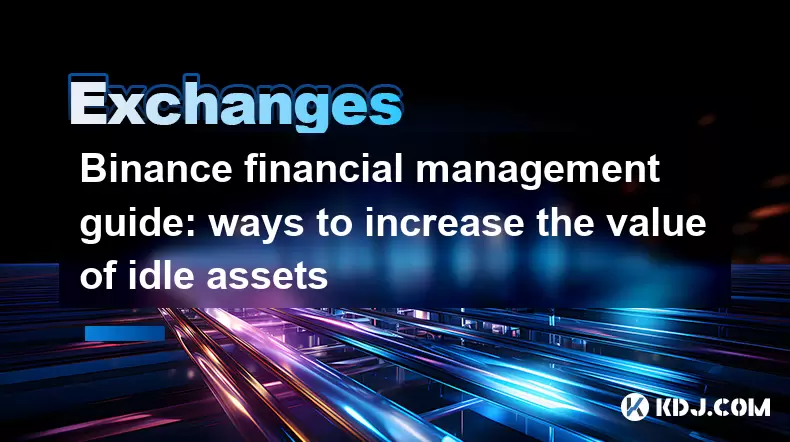
Binance financial management guide: ways to increase the value of idle assets
Jun 19,2025 at 11:22pm
Understanding Idle Assets in the Cryptocurrency SpaceIn the fast-paced world of cryptocurrency, idle assets refer to digital currencies that are not actively being used for trading, staking, or yield farming. Holding these funds in a wallet without utilizing them means missing out on potential growth opportunities. Binance, as one of the leading platfor...
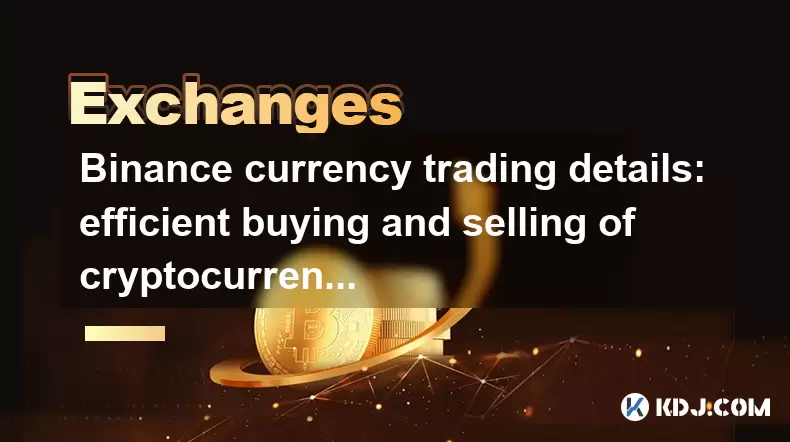
Binance currency trading details: efficient buying and selling of cryptocurrencies
Jun 19,2025 at 10:28pm
Understanding Binance as a Cryptocurrency Trading PlatformBinance is one of the largest and most popular cryptocurrency exchanges globally, offering users a robust platform for trading various digital assets. The platform supports a wide range of cryptocurrencies, including Bitcoin (BTC), Ethereum (ETH), Binance Coin (BNB), and many altcoins. Efficient ...
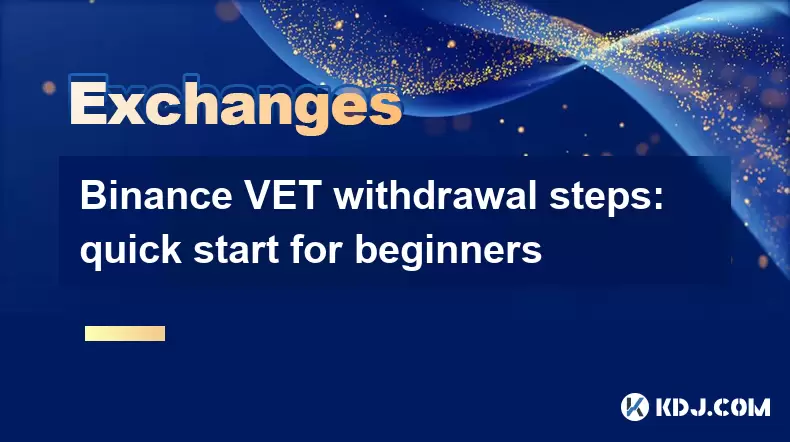
Binance VET withdrawal steps: quick start for beginners
Jun 19,2025 at 04:49pm
Understanding VET and BinanceVET (VeChain Token) is the native cryptocurrency of the VeChain blockchain, which focuses on supply chain management and enterprise solutions. Binance, one of the world’s largest cryptocurrency exchanges, allows users to trade and withdraw various cryptocurrencies, including VET. For beginners, understanding how to securely ...
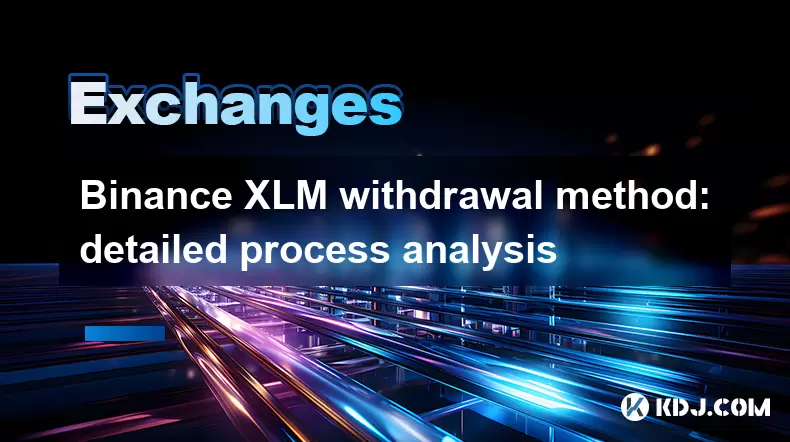
Binance XLM withdrawal method: detailed process analysis
Jun 19,2025 at 07:29pm
Overview of Binance and XLM WithdrawalBinance is one of the largest cryptocurrency exchanges globally, offering users a platform to trade, store, and withdraw various digital assets. XLM, also known as Stellar Lumens, is a popular cryptocurrency used for cross-border transactions and decentralized financial services. When it comes to withdrawing XLM fro...
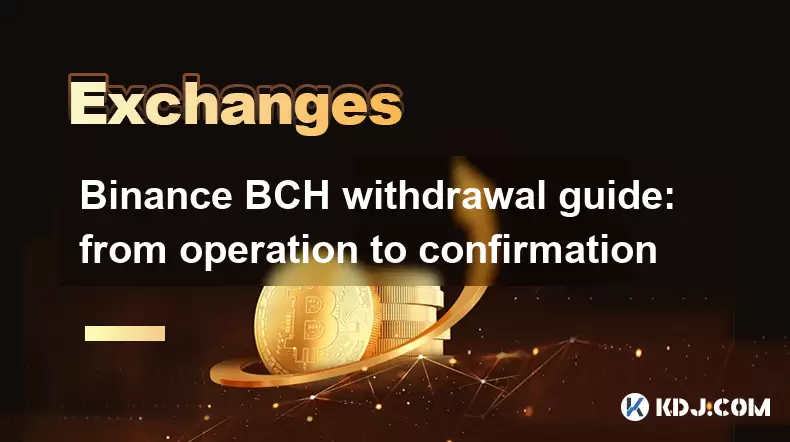
Binance BCH withdrawal guide: from operation to confirmation
Jun 19,2025 at 04:21pm
Understanding BCH Withdrawals on BinanceBitcoin Cash (BCH) is one of the most popular cryptocurrencies supported by Binance, and withdrawing it requires a clear understanding of the platform’s interface and blockchain mechanics. Before initiating a withdrawal, users should ensure their wallet address is correct and compatible with the BCH network. Binan...

Binance spot market analysis: seize the best time to buy and sell
Jun 19,2025 at 04:56pm
Understanding the Binance Spot MarketThe Binance spot market is one of the most popular platforms for cryptocurrency trading globally. It allows users to trade digital assets at current market prices, making it essential for traders aiming to buy low and sell high. Unlike futures or margin trading, spot trading involves direct ownership of the asset aft...

Binance financial management guide: ways to increase the value of idle assets
Jun 19,2025 at 11:22pm
Understanding Idle Assets in the Cryptocurrency SpaceIn the fast-paced world of cryptocurrency, idle assets refer to digital currencies that are not actively being used for trading, staking, or yield farming. Holding these funds in a wallet without utilizing them means missing out on potential growth opportunities. Binance, as one of the leading platfor...

Binance currency trading details: efficient buying and selling of cryptocurrencies
Jun 19,2025 at 10:28pm
Understanding Binance as a Cryptocurrency Trading PlatformBinance is one of the largest and most popular cryptocurrency exchanges globally, offering users a robust platform for trading various digital assets. The platform supports a wide range of cryptocurrencies, including Bitcoin (BTC), Ethereum (ETH), Binance Coin (BNB), and many altcoins. Efficient ...

Binance VET withdrawal steps: quick start for beginners
Jun 19,2025 at 04:49pm
Understanding VET and BinanceVET (VeChain Token) is the native cryptocurrency of the VeChain blockchain, which focuses on supply chain management and enterprise solutions. Binance, one of the world’s largest cryptocurrency exchanges, allows users to trade and withdraw various cryptocurrencies, including VET. For beginners, understanding how to securely ...

Binance XLM withdrawal method: detailed process analysis
Jun 19,2025 at 07:29pm
Overview of Binance and XLM WithdrawalBinance is one of the largest cryptocurrency exchanges globally, offering users a platform to trade, store, and withdraw various digital assets. XLM, also known as Stellar Lumens, is a popular cryptocurrency used for cross-border transactions and decentralized financial services. When it comes to withdrawing XLM fro...

Binance BCH withdrawal guide: from operation to confirmation
Jun 19,2025 at 04:21pm
Understanding BCH Withdrawals on BinanceBitcoin Cash (BCH) is one of the most popular cryptocurrencies supported by Binance, and withdrawing it requires a clear understanding of the platform’s interface and blockchain mechanics. Before initiating a withdrawal, users should ensure their wallet address is correct and compatible with the BCH network. Binan...
See all articles

























































































